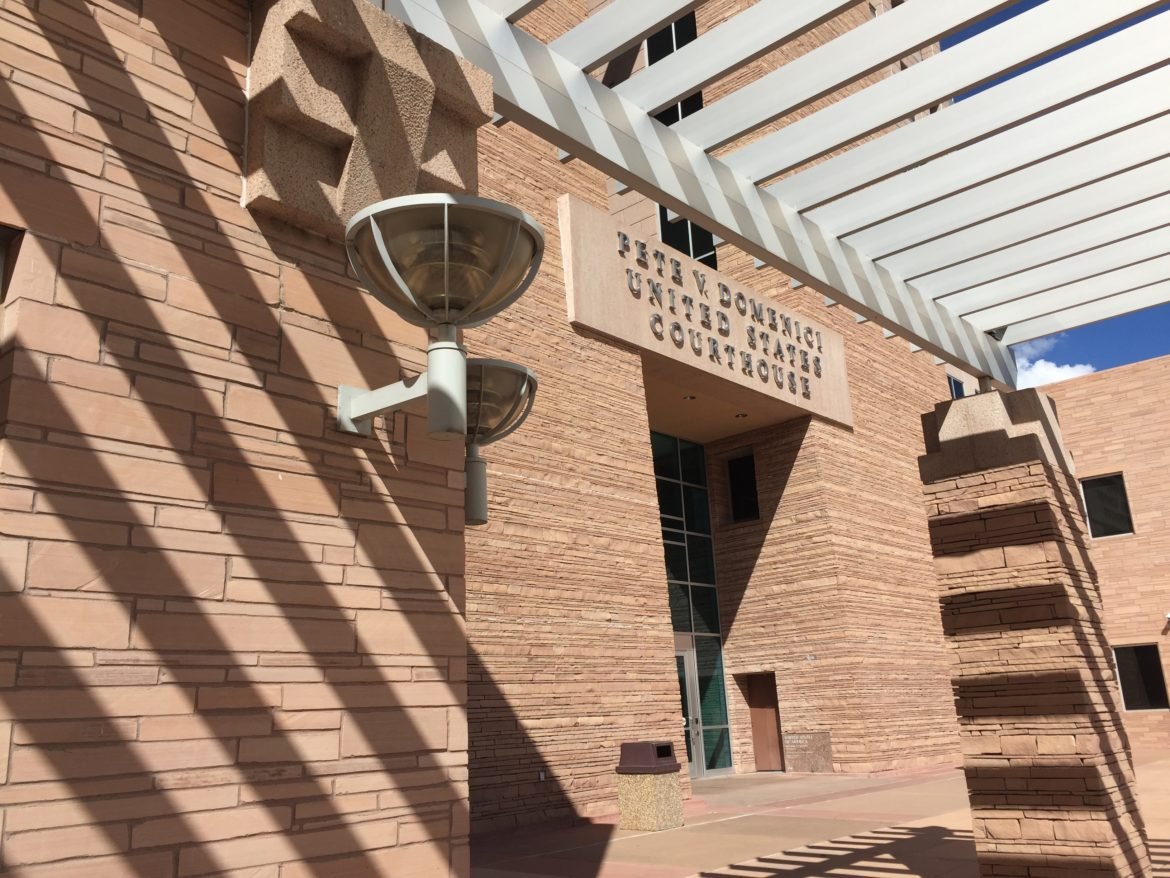A longstanding culture of secrecy in New Mexico’s federal courts appears unchanged after a pair of New Mexico In Depth stories exposed it last fall and one of the state’s leading government transparency advocates called for change.
We’re using the word “appears” because neither the court nor the big, publicly funded and mandated law firms that practice there every day have answered NMID’s questions for this story yet. (After our inquiries, the court clerk said the chief judge has agreed to an interview in a couple weeks.)
But using a court records searching trick we learned last year, NMID did a little spot checking to see how much access the public has in cases where people’s freedom is nearly always on the line.
The picture doesn’t look any better than last year. More on that later.
First, here’s the quick version of what was happening as of last September:
NMID learned that defense lawyers and prosecutors were filing records willy-nilly “under seal” in federal criminal cases across the state: No judge’s order, just a clicked box in the electronic filing system if a lawyer felt like a document should be shipped down the proverbial memory hole.
That’s not how it’s supposed to work.
Instead, judges, not lawyers, are supposed to decide which documents comprise a court record but remain shielded from public view. And there’s a process for that, something of a best practice that’s also bolstered by reams of case law and, some argue, the “public trial” clause in the Sixth Amendment to the U.S. Constitution.
It goes like this: If a lawyer wants something sealed in a criminal case, they file a motion asking the judge to seal it. The judge considers the motion, then grants or denies it.
Regardless of the decision, the motion to seal the record and the judge’s order are visible to the public. That gives journalists or anyone else the chance to challenge a sealing order if it appears overly restrictive.
Trouble is, in New Mexico, it appears no such motions are being filed in many cases, and no such judicial orders are issued. Lawyers just seal documents on a whim, with no hint they even exist in the file.
More on that later, too.
The practice came to light as NMID continued reporting on cases in which black men argued they had been targeted by the federal bureau of Alcohol, Tobacco, Firearms and Explosives (ATF) because of their race in a large-scale sting operation carried out in 2016. Roughly 10 percent of the records in two of those cases we examined had been sealed with no judicial oversight.
The practice went much deeper, NMID was told at the time.
“There has been a long-standing practice in the District of New Mexico for parties to elect to file a document under seal, without prior approval of the district court,” then-Assistant Federal Public Defender John Robbenhaar told us. (Robbenhaar is now a U.S. magistrate judge.)
Greg Williams, former board president of the New Mexico Foundation for Open Government, blasted the practice last September, summing up the importance of following proper sealing procedures: “It’s absolutely in everyone’s interest to have an open process: it protects the court from accusations of bias or wrongdoing, it protects law enforcement, it protects the defendants and anyone else who has any involvement.”
This wasn’t just Williams beating the transparency drum because he’s inclined to do so and because he’s been fighting for New Mexicans’ right to know for decades. And it wasn’t just NMID bellyaching because we couldn’t get access to records in cases we’d been following.
The sealing practice violates the court’s own rule. “A motion to file documents under seal is filed electronically, unless prohibited by law. If the motion is granted, the sealed documents are also filed electronically,” it says. The court hasn’t changed that since last year’s NMID stories, according to the court’s website.
This week, NMID contacted Court Clerk Mitchell Elfers, U.S. Chief District Judge William P. “Chip” Johnson and the Federal Public Defenders Office to ask whether the practice had changed since last fall.
The public defenders didn’t get back to us; Elfers called Friday afternoon to say Judge Johnson had agreed to an interview later this month.
With the help of longtime New Mexico federal court practitioners last fall, NMID learned how to spot improperly sealed records in the court’s online case repository, PACER. In a given case, each associated document is listed sequentially by number, usually beginning with a charging document. If there are gaps in the numbered sequence — in other words, missing numbers in the file — that usually means a document has been filed under seal.
This week, NMID ran a query in PACER for all criminal cases filed in New Mexico federal courts between Jan. 31 and Feb. 28 — ensuring we’d get a sample of cases filed after our stories were published last September.
The search netted 91 cases. From there, we chose 30 cases at random, searching the online document history for each. In 18 of the 30, we found multiple missing document numbers. We didn’t find any motions from attorneys asking judges to seal the documents in question, or any sealing orders from judges.
That means 60% of the cases we searched appeared to contain sealed records with no indication those records even exist.
There’s that word again: “appeared.” It’s difficult to say for sure what’s happening in these cases — and that’s the problem.
Perhaps Judge Johnson will have some answers.
